What to wear mountain biking: All the mountain bike gear you need from head to toe
Wearing the right kit will greatly improve your comfort and enjoyment out on the trails, we break down key clothing items to make it easier to choose what to wear mountain biking
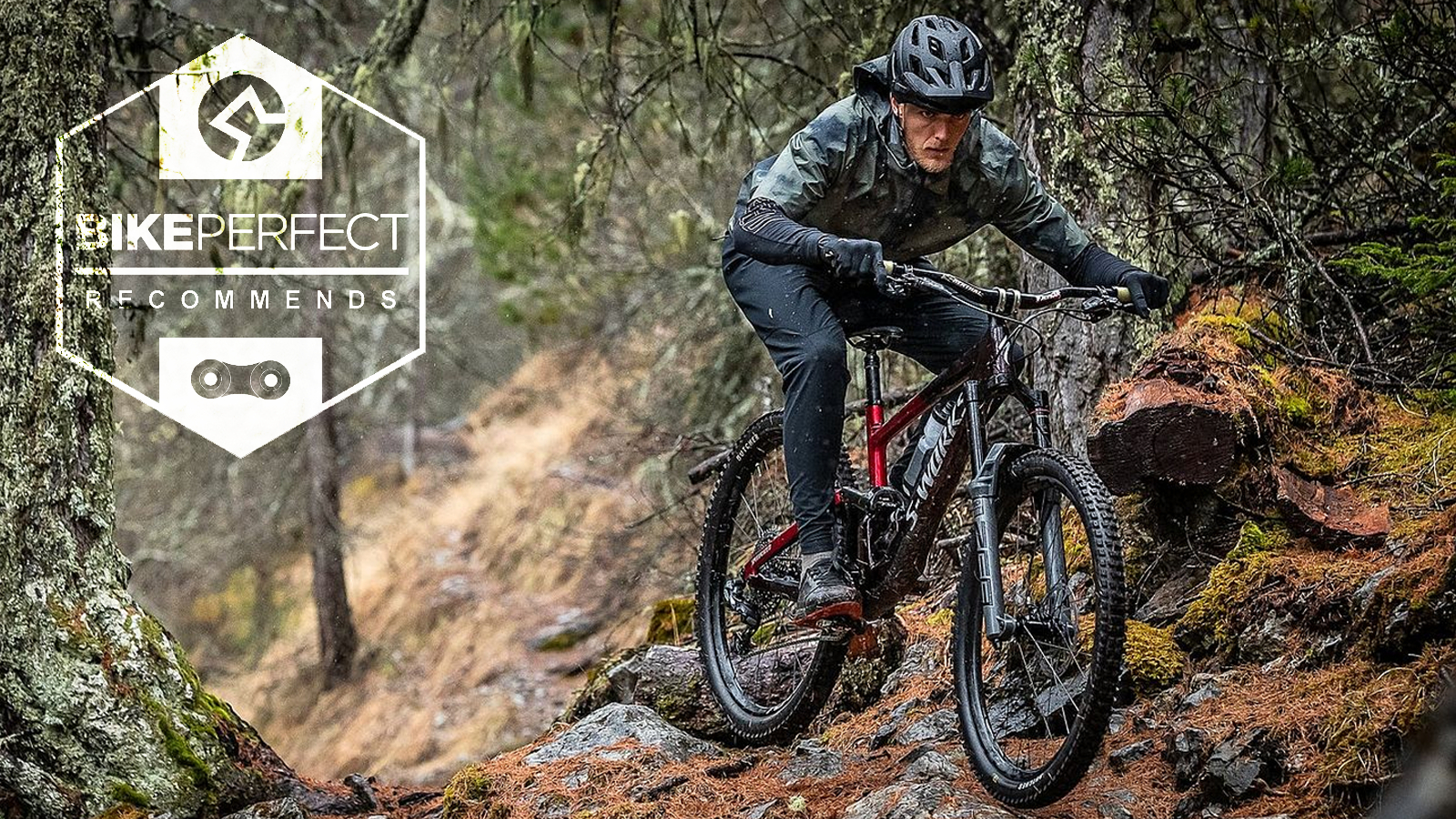
The best part about mountain bike kit is that it isn’t as restrictive or streamlined as other cycling wares such as lycra, time trial suits, or cyclo-cross skinsuits. All of those pieces follow very strict and almost identical designs, with little room for variety or self-expression. Mountain bike kit is almost the opposite.
You can wear a tight skinsuit for Short Track Cross-Country racing, or a pair of mountain bike pants for a downhill ride. Some riders even like wearing flannels or T-shirts for mountain biking, with padded shorts on their lower half. Whatever your preference or personal style, there is mountain bike kit out there for you. And when it comes to descending gnarly trails, riding through cold mud, or racing in the heat of summer, there’s a lot more to mountain bike gear than the clothing alone.
Our brain is our most important commodity – the one that’s reading these words and picturing your next mountain bike ride – so let’s start there.
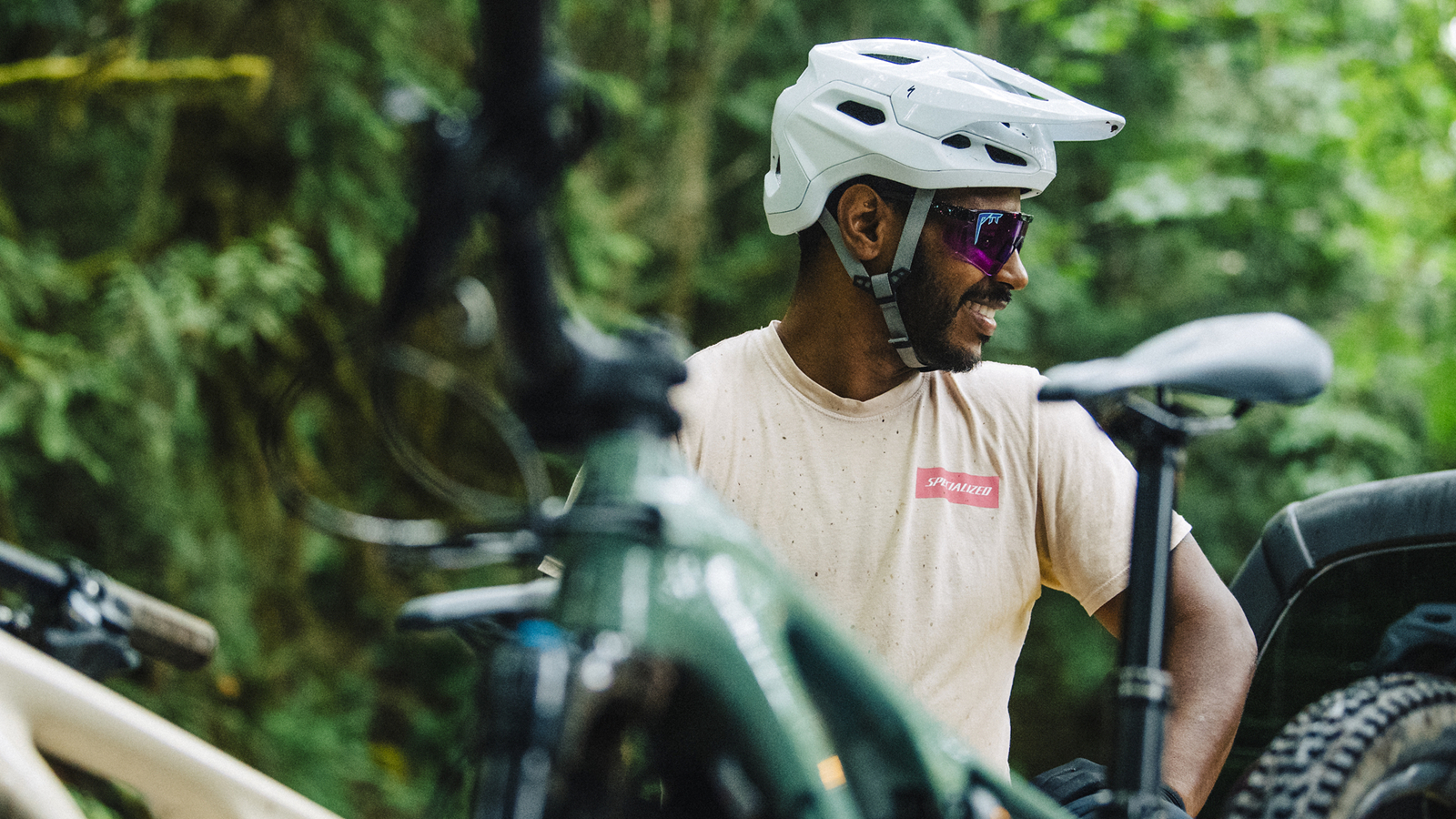
Helmet
Why trust BikePerfect
Having the best mountain bike helmet to protect your head is always important. Any cycling discipline benefits from head protection, but even more so on a mountain bike. On singletrack trails, you’ll be traveling at high speed with rocks and potential stopping points everywhere. Trees, sticks, roots, and rocks represent obstacles that make mountain biking fun, but could also cause you to crash at any moment.
In contrast to road cycling helmets, most mountain bike helmets have a detachable visor or peak that sticks out over your forehead. This is to protect your eyes from the sun, as well as protecting your face from low-hanging branches and rain.
There is another style of helmet designed for more extreme types of mountain biking like downhill riding and enduro racing: full-face helmets. The best full-face MTB helmets offer the most coverage and protection of all helmet designs. While full-face helmets offer loads of protection, the extra coverage does mean that they struggle with ventilation, so they are generally reserved for days where descending is the primary focus.
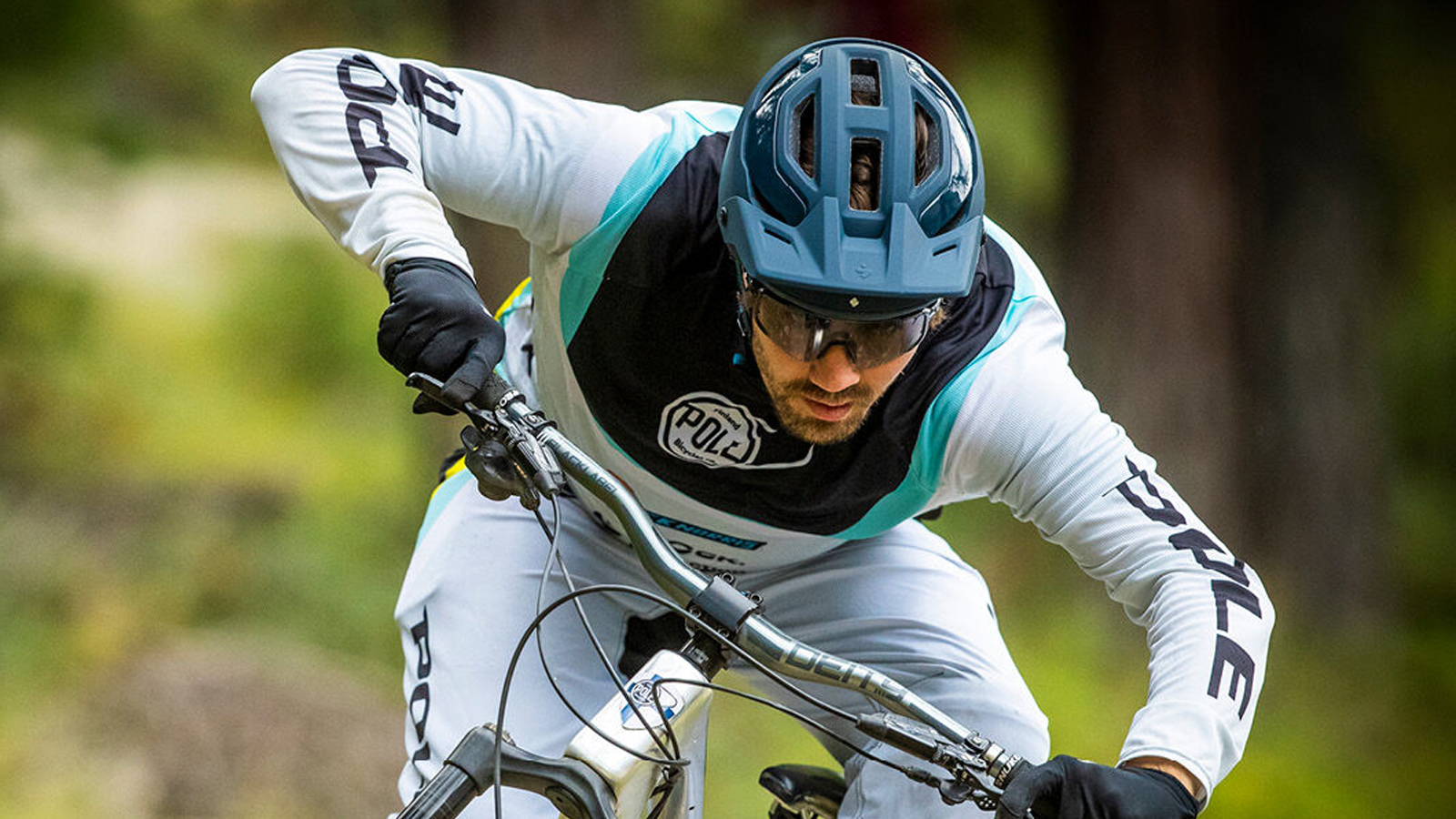
Glasses and goggles
As opposed to the sunglasses of road cycling, the best mountain bike sunglasses are typically interchangeable or self-adjusting to account for the quick changes in lightness and darkness during a mountain bike ride. On a typical mountain bike trail, you’ll be riding through the shadows and the sun at a rapid rate, and that’s why many mountain bike riders wear glasses with tinted lenses that can reduce glare and moderate contrast between bright and dark conditions.
The best mountain bike goggles are used with full-face helmets, though you can wear goggles with a normal mountain bike helmet too. Many riders prefer goggles because they are more secure than glasses, and they are completely sealed against the elements. Conversely, glasses could bounce off during a rocky descent, or fail to protect your eyes from rain and mud being flicked up by the wheel in front of you.
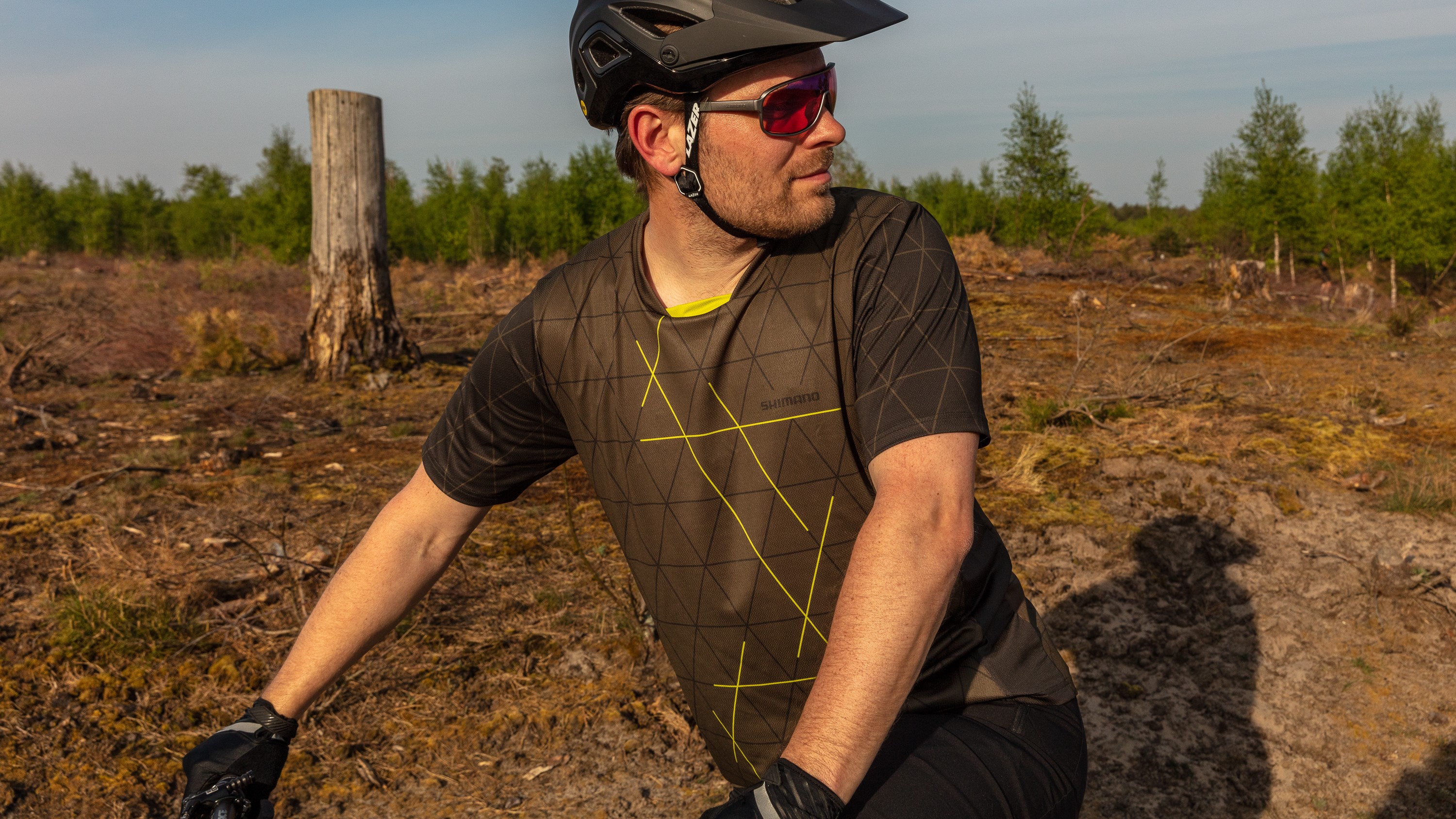
Jersey
The best mountain bike jerseys are typically much looser than a road ones because of aerodynamics and protection. Mountain bike speed is most often determined by your technical skill and ability in the corners, rather than flat-out power against the wind. Many mountain bikers choose long sleeve jerseys for added protection against branches and twigs, even in the summer months.
However, hot-weather riders and cross-country mountain bikers do often wear the lycra that we associate with road riding. These jerseys are lightweight and breathable, and often include rear pockets for storing a phone, tools, and food.
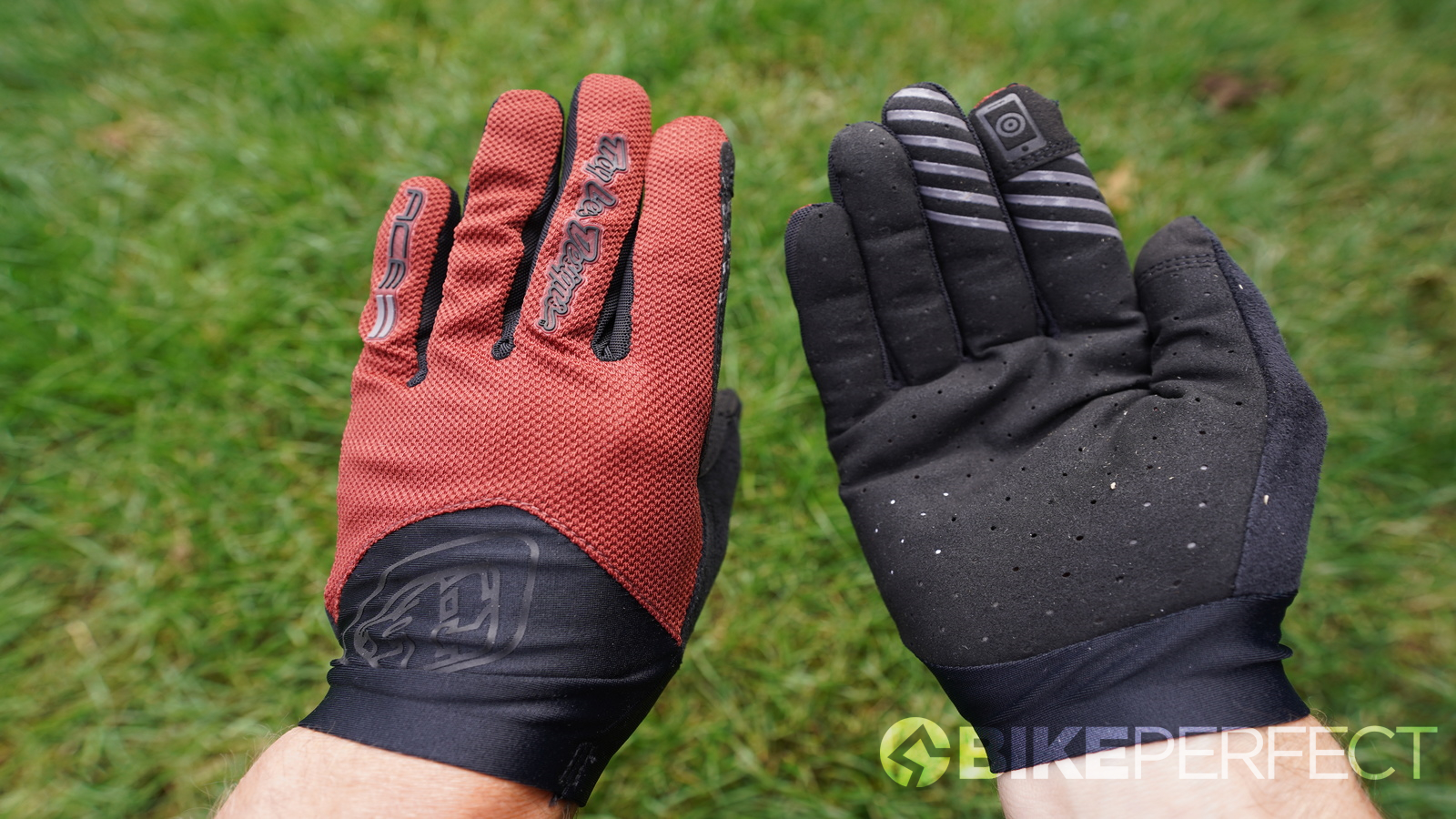
Gloves
Most mountain bikers wear full-fingered gloves when they are on the trail. The best mountain bike gloves have grippy palms which help keep your hands planted on the bars, no matter how rough the trail is. Some gloves will have padding in the palm for that extra layer of protection and comfort, although many riders prefer a thin palm for better bar control and feel.
Mountain bike gloves are designed to be both functional and protective, as our hands are one of the first things to hit the ground when we crash. These gloves are tight and functional, which also means that they can get pretty hot. Even in the summer months, most riders continue to wear full-fingered gloves because of the added grip and protection they provide for mountain biking.

Shorts, bibs, and pants
Many mountain bikers wear normal bib shorts for mountain biking, while others go with baggy shorts or even pants. The differences lie in performance and heat, as well as added protection from the elements.
Bib shorts are great for cross-country mountain biking because they are thin and lightweight, and they come with a chamois pad which makes sitting and bouncing on the saddle a whole lot more comfortable. To increase crash protection and durability most mountain bikers wear baggy shorts over the top of bib shorts, which many riders feel is more comfortable than bibs alone.
The best mountain bike shorts are comfortable in the saddle, and comfortable for all-day wear. They are usually knee-length and made with special tear-resistant fabric which will hold up against a tree or branch much better than bib shorts.
Over the last few years, many mountain bikers are choosing the best MTB pants to ride in rather than shorts. Brands have been working hard with tailoring and materials in order to offer slimline trousers which still offer freedom of movement but have more coverage.
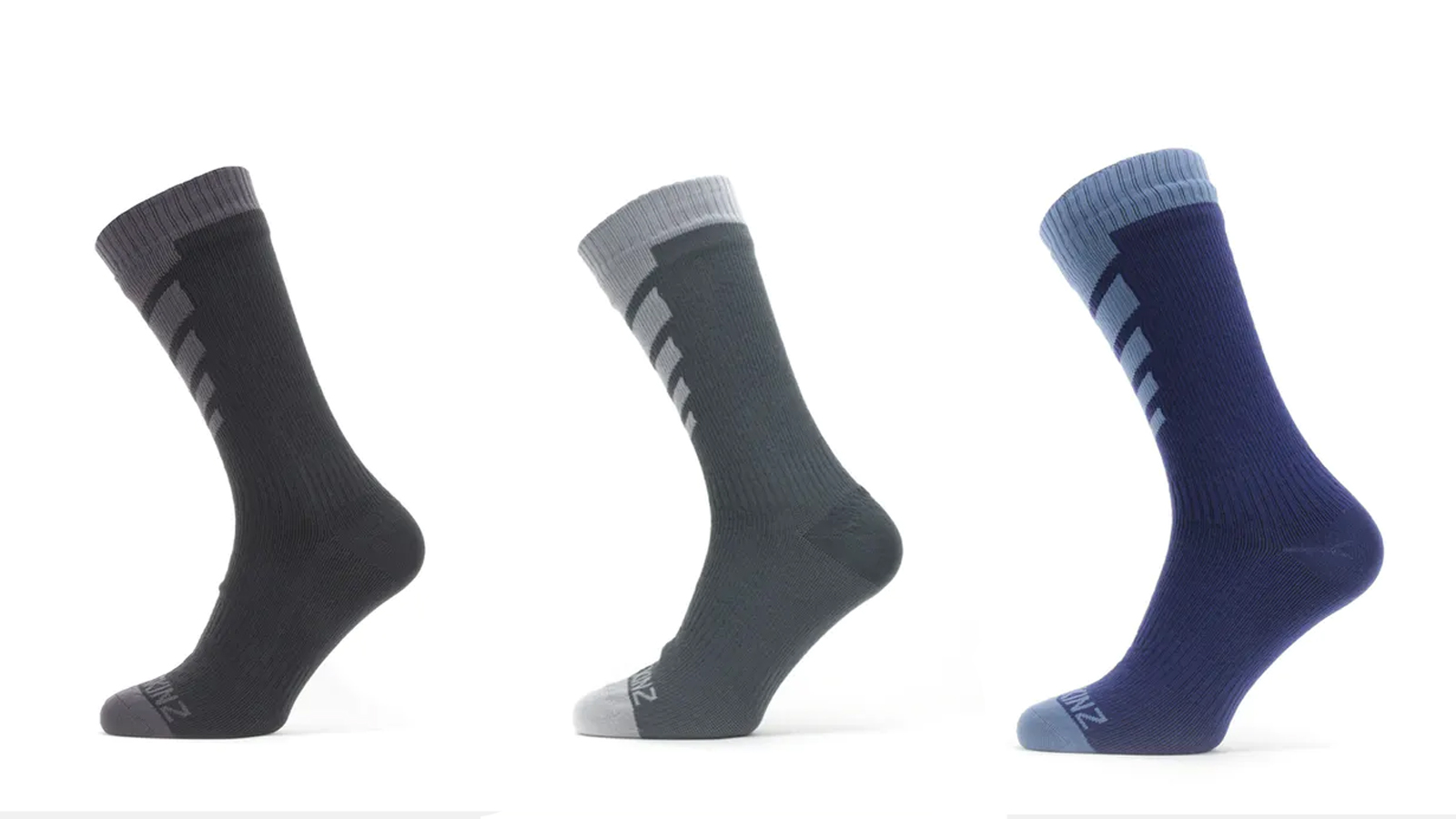
Socks
You can wear just about any style of sock for mountain biking, but if you’re wanting the best sock out there, you’ll want one that is long and relatively thick. This will help keep your legs protected from rain and mud; but you can take it a step further and get waterproof socks, which many mountain bikers do. Not only will your legs stay warm and dry, but so will your feet since the water won’t be dripping down into your shoes.
Some riders go even further and purchase waterproof shoe covers, which slip over the top of their shoes and prevent water from seeping down into their feet. For warm-weather riding, typical cycling socks that are lightweight and breathable will be perfect.
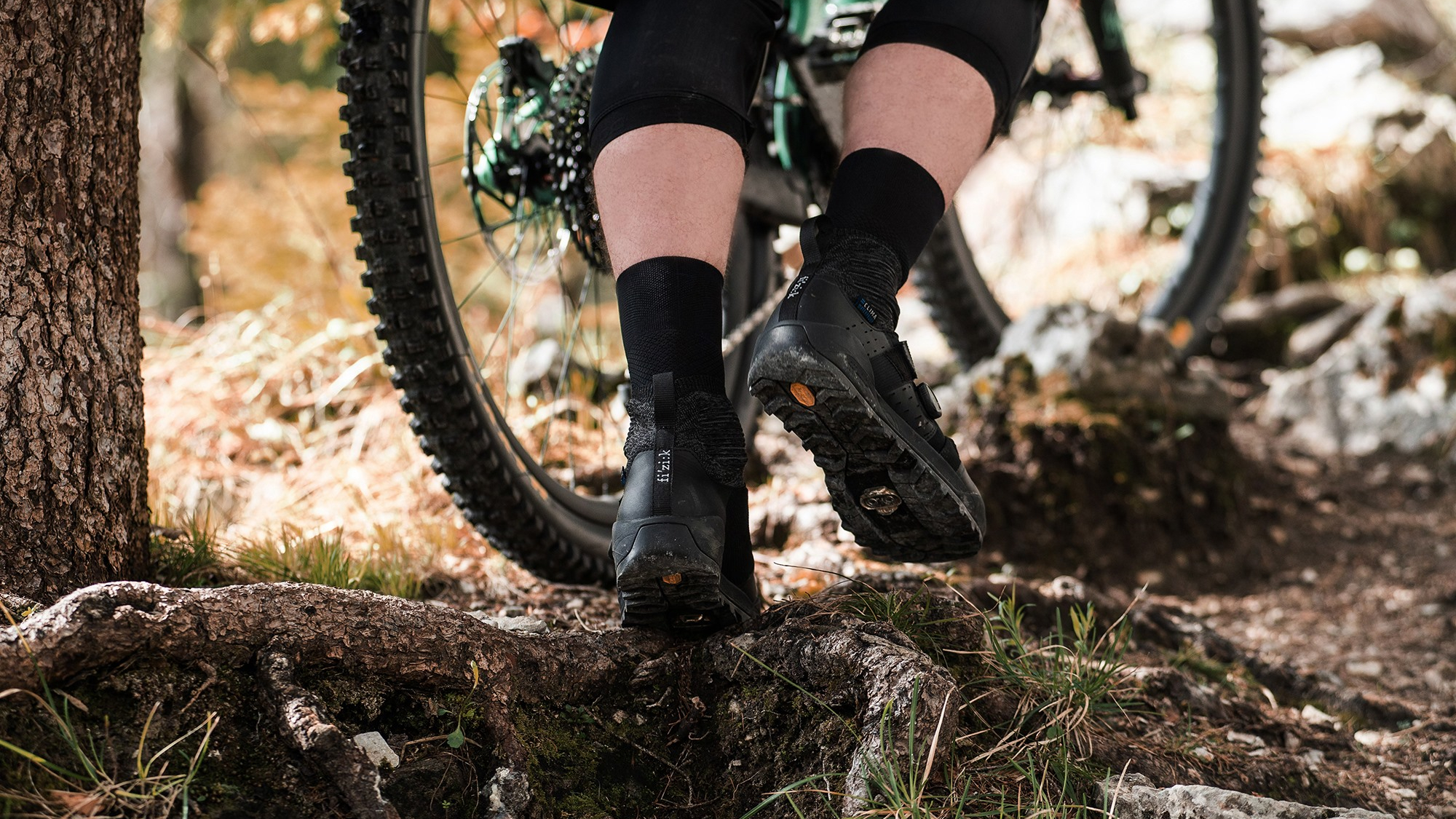
Shoes
The best mountain bike shoes come in two types, flat pedal and clipless.
A lot of the best flat pedal MTB shoes look like a sneaker or a skate shoe. These are used with flat pedals and have a textured or sticky surface on the sole for the pedal pins to grip into. These shoes are typically lace-ups, as opposed to the Boa or ratchet systems used by most road bike shoes.
Clipless shoes use a cleat bolted to the sole of the shoe that engages with the pedal mechanism to give a rider a more secured connection with the bike. Clipless systems have become the choice of almost all racers due to the improved power transfer and efficiency they offer both climbing and descending. Clipless shoes come in two styles: there are XC ones which are more lightweight and look like road shoes, and gravity orientated ones which look like sneakers.
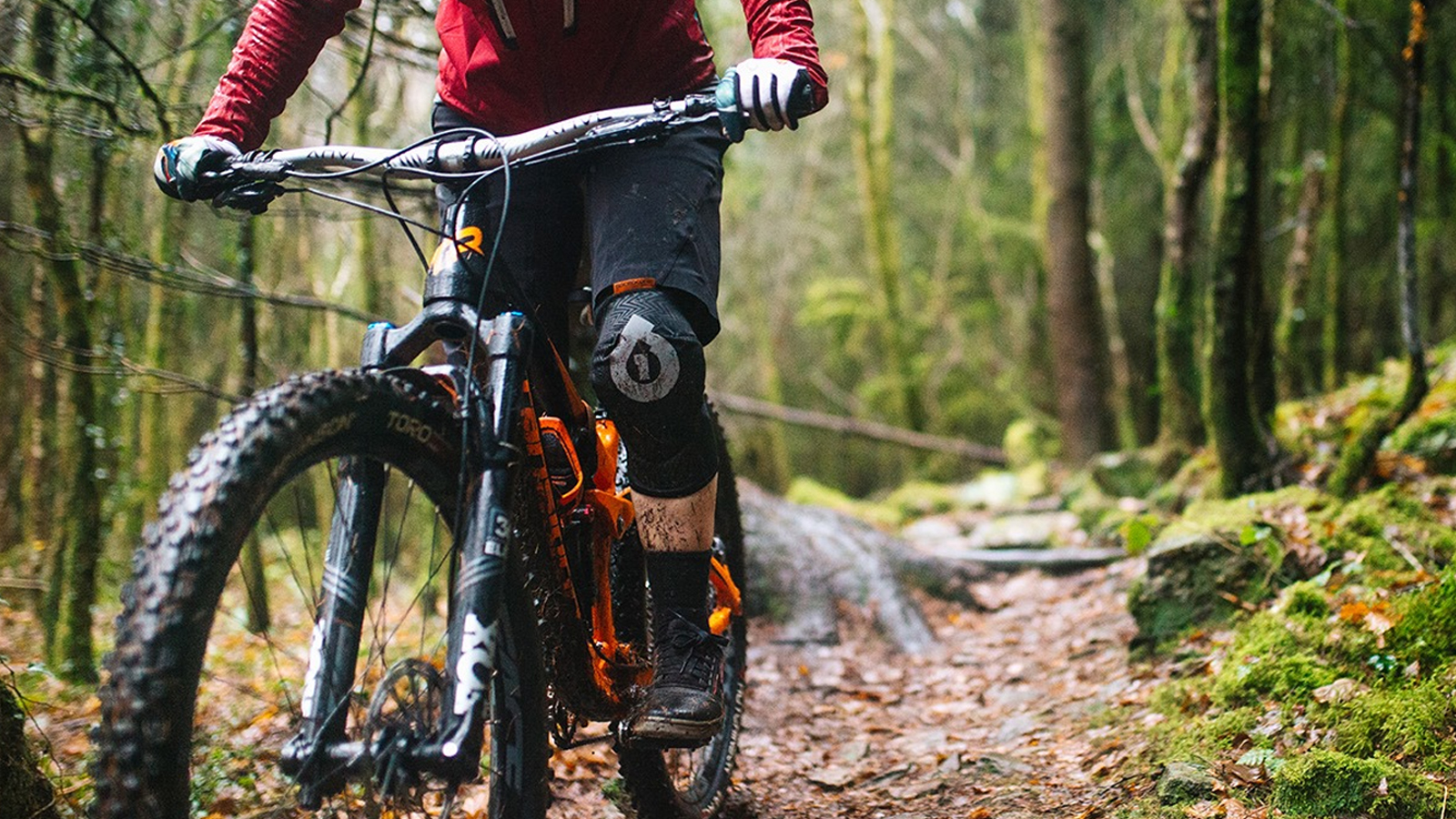
Padding
For more extreme mountain biking, many riders wear knee and elbow pads to stay protected in the event of a crash. Other than your hands, knees and elbows are most likely to be hurt so it's important to add protection.
As with most mountain biking gear, the best mountain bike knee pads come in thin and lightweight options, as well as thick and heavy options. The former is best for beginners who are still getting comfortable with the trail, while the latter could be used by fearless racers who are willing to take a lot of risks to reach the bottom of the trail first.
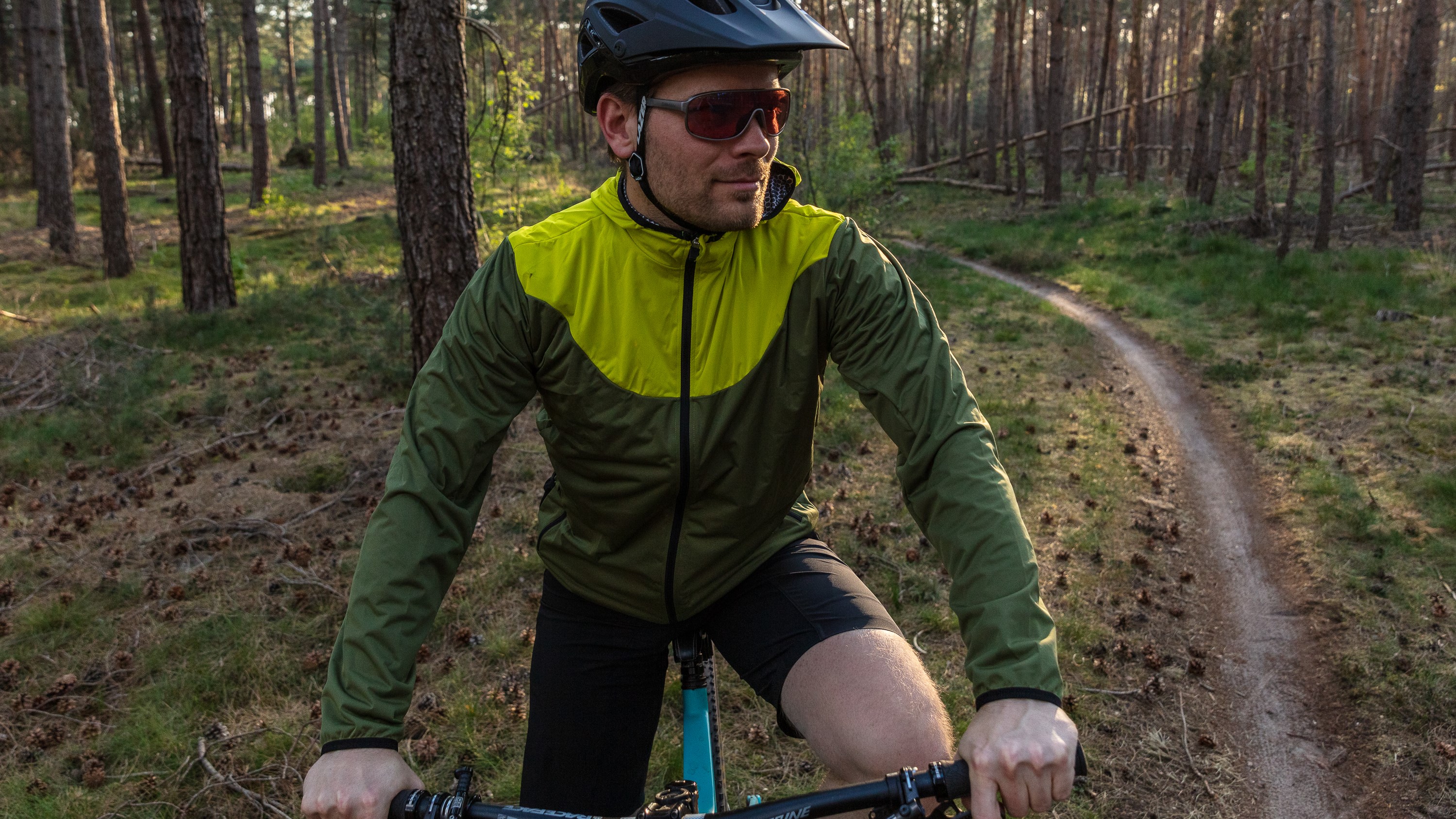
Cold weather gear
Cross-country riders might opt for leg warmers paired with bib shorts, however most riders will don their best waterproof MTB trousers in bad weather. These pants cover your lower body from your hip to your shoe, and will keep you warm and protected against the cold rain. Most are made from either hard-shell or softshell fabric – the former is thicker and protects against the rain, while the latter is more breathable and water resistant.
Of course, we can’t forget about jackets. Mountain biking year-round exposes you to all of the elements including rain, sleet, and maybe even snow. With a helmet visor, goggles, thick gloves, and waterproof pants and socks, you’re almost completely protected.
In keeping your core warm, the best mountain bike jackets come in three main types to choose from: lightweight, waterproof, and hybrid.
Lightweight jackets designed for mountain biking are typically made from water-resistant material that is also breathable. This is accomplished by putting mesh panels throughout the jacket, which will help keep you cool as well as protected. These jackets are thin enough that you can fold or roll them up, and pack them away in your pocket when not in use.
Waterproof jackets are thick and heavy, but they’ll certainly do the job of keeping water out. They are usually made from hard-shell material, and fit looser than road cycling jackets.
Hybrid jackets are – as you might have guessed – somewhere in between lightweight jackets and waterproof jackets. Hybrids are a bit thicker than lightweight jackets, but can still be stowed away during a ride. These jackets won’t be as thick or protective as waterproof jackets, but they are certainly lighter and more breathable, making them an appealing option for a mountain biker looking for a single jacket.
Conclusion
At the end of the day, you can wear almost anything on a mountain bike. You won’t get any weird looks for wearing shorts versus pants, gloves versus no gloves, or one helmet versus another. Mountain biking has a massive community of like-minded riders who just want to have fun, regardless of what kit you’re wearing.
The above guidelines focus on comfort, performance, and protection. These are the pieces of kit that will help you feel confident on the mountain bike, whether it’s on a cold and muddy trail, or whether it’s on the start line of a race.
In addition to elite-level road, track and Zwift racing, Zach Nehr is a freelance writer and the head of ZNehr Coaching. He contributes written articles on a variety of cycling-related subjects, including product reviews and advertorials, as well as feature articles and power analyses. With a Bachelor’s Degree in Exercise Science from Marian University-Indianapolis, Zach spends his time working with endurance athletes of all ages and levels at ZNehr Coaching. Having entered the sport at age 17, Zach has had a successful racing career, winning the 2017 Collegiate National Time Trial Championships and a 9th place finish at the 2019 US Pro National Time Trial Championships. These days, Zach spends most of his ride time indoors, racing on RGT Cycling and competing in the Zwift Premier League with NeXT eSport.
